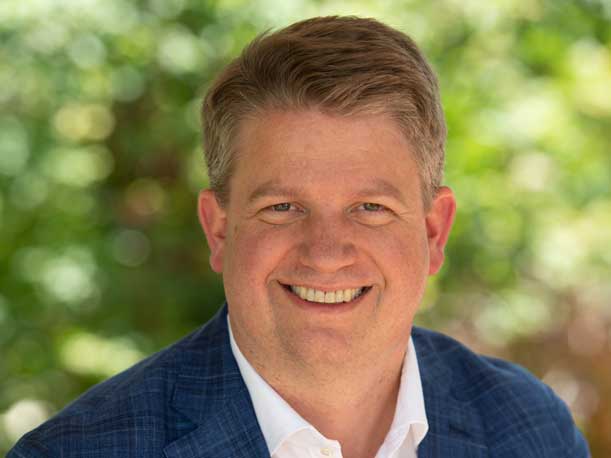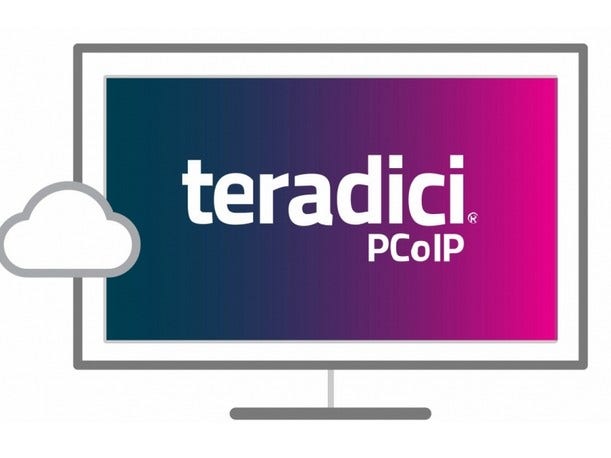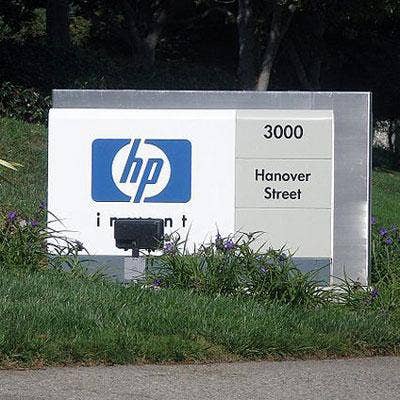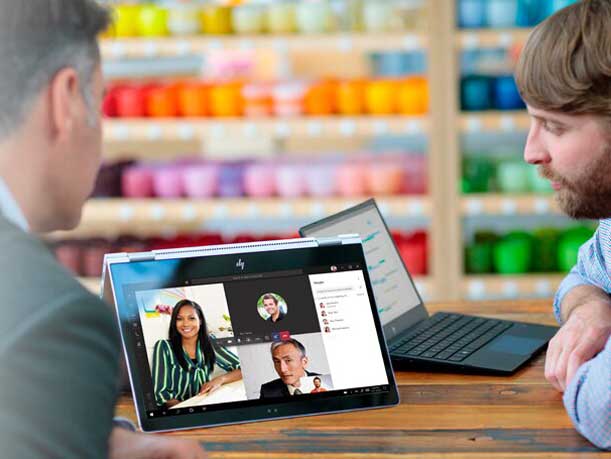HP’s Dave Shull: Workforce Central Will Help Partners Sell Services
In an extensive interview with CRN, HP Inc.’s services leader Dave Shull details how the upcoming Workforce Central toolbox will ‘make it easy’ for partners to seize a ‘significant growth opportunity’ in services for PCs, printers and other devices around the hybrid employee experience. ‘We can do something that a pure software company can’t do because we actually have the telemetry in the devices,’ he says.

‘We’re All In’ On The Hybrid Employee Experience
HP Inc. executive Dave Shull has vowed to “make it easy” for partners to drive revenue through services around the hybrid employee experience, calling it a “significant growth opportunity” for the channel.
In an exclusive interview with CRN, Shull, the former Poly CEO who is now president of HP’s Workforce Services and Solutions group, said the main way the Palo Alto, Calif.-based vendor plans to do this is through Workforce Central, a “toolbox” arriving this summer that will consolidate more than 64 of HP’s existing services for PCs, printers and other devices into a single cloud-based dashboard. Workforce Central will also let partners integrate the services into their own systems.
[Related: HP Ushers ‘Next Era of Hybrid Work’ With New Laptops And Solutions]
Shull revealed Workforce Central to partners at HP’s Amplify Partner Conference last month, saying it will turn them into “virtual CIOs” for their customers and create new upsell opportunities.
“This is an HP strategic initiative to say we are all in on solving this space as a corporation because we think we have a really unique set of assets in terms of the gear that we offer: PCs, printers and collaboration. No one else offers that. And so let’s seize that opportunity,” he said.
“And we can do something that a pure software company can’t do because we actually have the telemetry in the devices,” Shull added. “We have dozens of sensors in some of our PCs. How do we make the most of that to provide unique insights that a pure software company is not capable of doing? And so strategically, we’re all in on capturing this employee experience space.”
HP’s Workforce Services and Solutions group is currently a $4 billion business, most of which comes from the vendor’s managed print services and Device-as-a-Service offerings. In a recent interview for CRN’s April cover story about HP, the company’s CEO, Enrique Lores, said he formed the group last year with Shull at the helm to help get more partners behind the PC and print giant’s services push.
“We are going to be integrating our tools [and] integrating our programs, helping them to manage the full portfolio in a much easier way, which will help them to reduce their costs, will help them to capture more business and eventually will help them make more money,” Lores said.
What follows is an edited transcript of CRN’s deep-dive interview with Shull, who talked about the importance of Workforce Central to HP’s services push, how it fits in with HP’s expanding view of the hybrid employee experience, why it will have a “freemium” business model, whether HP will integrate third-party services into the toolbox and how the offering could expand in the future.

How central is Workforce Central to HP's Workforce Services and Solutions business?
Let me hit a couple of things. First of all, workforce versus workplace. A lot of people talk about workplace, and we’re intentionally talking about workforce here instead of workplace because we really think the employee is the center of the equation. So that reflects actually a fair amount of internal debate, but I think I want to be very focused on the employee experience at the workplace.
Two: This only works if we can really provide a unified view across every aspect of the employee experience, whether it’s a PC or printer or trying to get on a Zoom call the way you just did. Every aspect of that employee journey is really important, so Workforce Central is a core piece of that.
Now, there’s a lot of work that underlies Workforce Central. There are 64 different services. They all have to be pulled together. The data has to be analyzed. The AI has to be deployed, so this will be an evolutionary product. But to answer your question directly: Workforce Central is very central to our Workforce Services business.
Is Workforce Central a paid offering?
I’m a huge fan of what I would call a ‘freemium’ model, which comes from my media background as well, where there’s base functionality that I believe every single customer should have. I believe every single HP device should have telemetry enabled. I believe every single customer of ours should have some basic insights into their fleet. But obviously, there are some aspects of the insights that we provide with the services we provide that cost us more. And so I think you’ll see a model that has some upcharge options depending on the level of service or capabilities.
For the paid options, will that come in the form of a monthly SaaS subscription?
I think to be determined. More to come.

When you said 64-plus services will be accessible within Workforce Central, you’re going to be able to monitor and control all of those services within that, correct?
Not on day one. This will be phased as we roll out. Certainly the vision is that every single HP device that goes out there for the employee experience—some of our stuff obviously is [for] gaming or for a different application, but everything that’s employee-centric, whether it’s a PC or printer or Poly device, if it’s touching that employee experience—we want it all to be administered in the same platform.
Will Workforce Central be a cloud-based service?
Workforce Central is cloud-based.
So Workforce Central will connect to Poly devices and services? Will Teradici remote computing services, now known under the HP Anyware brand, also plug into the toolbox?
Absolutely on Poly. My view is that whether it’s a PC or an audio device such as the one I’m using right now on our Zoom call, it’s all part of that employee experience, so that’s critical. Teradici has some amazing capabilities for certain types of employees. There are digital twinning capabilities when you’re transferring devices, so that’s important there and you’d want to tie it in there. If you are an animator and you want to be able to remotely access your graphics design machine, HP Anyware—which is our branding for Teradici—allows you to do that. And so of course you would want to make sure that it’s integrated seamlessly as well from a CIO point of view.

Are there plans to integrate Workforce Central with third-party software and services?
We’re already doing that to a certain extent. So ServiceNow, Microsoft integrations, absolutely. Certainly our largest enterprise customers already have applications in place from an employee servicing capability, so we want to provide that integration. Others, some smaller companies, they want to use this as a stand-alone platform, so we’ll offer that as well.
When you said that some of these integrations are now in place, such as with Microsoft and ServiceNow, does that cover services you’ll be able to access through Workforce Central?
We’re leveraging some of the existing integrations that we have with those two partners, and we’ll continue to centralize them and make the API access even more robust over time.
How many existing tools will Workforce Central replace?
Our vision is that is that it replaces all of these 64 individual services, so it becomes a single interface that you would use for all these 64 different interfaces. I’ve had very few customers say, ‘Hey, I want a separate, discrete interface for X, Y or Z,’ right? Everyone is saying, ‘Please pull it together. Make it simpler for me’ because, if anything right now, they have far too many different vendors and partnerships, and they just want one view. And so I think that’s really our approach here.
Now, that being said, we’re going to have one HP view of all the services, but we know that our partners may have services that sit on top that; Microsoft, ServiceNow services that sit on top of that. And so we want to make sure that we’re very integration-friendly, but from an HP point of view, we really want to provide one view of our ecosystem for employee management.
In your recent blog post about Workforce Central, you described it as a tool and a dashboard, but this also kind of sounds like a platform. You're having all these services that sit on top of this platform. Are we thinking about this correctly? Or is that not the right way to think about it?
I’m a fan of calling it a toolbox. And here’s why: Especially when we’re talking to our channel partners, they’re going to go out and become the virtual CIOs to all of our mutual customers, and they’re going to have a set of tools that they want to use to service the needs of our customers. And so I’m calling this a toolbox for our channel partners, and it’s one that makes their job a lot easier and makes the employee experience a lot more seamless.
You talked about how Workforce Central will help partners become virtual CIOs for their customers. Can you elaborate on how will partners be able to incorporate Workforce Central into their business?
We see a bunch of different conversations with different types of partners. Some of them would love to just have a toolbox that they deploy on a white-label basis. Others have sophisticated service offerings of their own already, and they just want to plug into the data. And I think my message is one size does not fit all. We understand that, and so we fully expect to have a range of ways that our partners can engage and make money. We’re not trying to say there has to be one model for everyone because I don’t think that matches our partner base.

What are the different ways Workforce Central will help partners grow their business and become more profitable?
I think the most critical way is a strategic approach, which is to say we’re all about this employee experience, this digital employee experience, to bring the best of the HP know-how and knowledge across many, many global customers, whether that is the Poly approach to personas or how to best deploy PCs in 50 different countries and how that gets matched with persona employees worldwide.
So I think bringing that experience together, packaging that into a toolbox, is really mission No. 1. And whether they can make margin on additional upsell options, of course, that’s the plan. But my first strategic mission is to make sure that we’re taking the best know-how of HP across print, PC, collaboration and software, and saying, ‘Let’s deploy just an amazing digital employee experience for our customers.’
Will there be a compensation model for partners selling Workforce Central?
I am crystal clear on one thing. Our partners want to make money, and we want to make money. We’ll make money together. Crystal clear on that.
When will Workforce Central be available for partners?
I think the first version will be out this summer, and then we’ll roll out more versions over time.

In your blog post, you said Workforce Central is the ‘first requirement to building pre-packaged solutions and toolboxes for partners and customers.’ So this sounds like the first step in this new journey that you’re taking as head of the Workforce Services and Solutions group. Can you give any teasers on what happens next? What will these pre-packaged solutions and toolboxes look like?
We’re spending a ton of time with both partners and customers, and it’s really to fully detail every aspect of that employee journey, from on-boarding, to going through the basic parameters of starting with a new company, to the benefits, to payroll, to swapping out your computer two years later, to printing, to getting automated workflows and so on.
And so our vision is yes, this is the beginning. This is the first tool in the toolbox. And then what can we add on top of it that addresses the pain points specifically in every step of that employee journey? And so that’s our mission. And obviously, we’re building from the hardware up, and so you’d expect to see us add a series of layers on top that our partners can take to the end customers and say, ‘I’ve got a complete, comprehensive hybrid employee experience for you.’
Do you have a target for when you want all 64-plus services on Workforce Central?
I want it tomorrow. But I’m being told that that may not be possible. You’ll see it roll out over the next few quarters.
By moving all these services to Workforce Central, does that change the pricing structure for any of these existing services?
I think ‘maybe’ is the simple answer. And so I think what I would say to our partners is, again, our view is that some aspect of this should be included with every single device for free. There’s got to be some sort of employee experience management layer that’s free with every single device, and then we’re going to work closely with them to make sure there’s opportunity to upsell for things that we and the customers and the partners agree makes sense. So I think that’s going to be an evolutionary conversation, and we’ll be having frank dialogues with them as that happens. But the goal is to really uplevel the conversation for them and for HP with our customers so that we’re addressing what we think is a strategic need, which is this employee experience in the hybrid world.

What is your main message to partners about what Workforce Central is and what its importance will be to HP once it's available?
I think my main message is that, from an HP perspective, services are meant for our partners. Services are not meant to replace our partners. Services are meant to empower them with toolboxes and capabilities to become virtual CIOs for our customers. And Workforce Central is the first framing of that toolbox. [That’s] probably the best way to say it. And so that’s No. 1.
No. 2, I’m going to talk to them specifically about other tools that are in that toolbox that they may not be aware of, such as HP Proactive Insights and HP Anyware that they can sell today. And I’m going to walk through some pretty amazing case studies to really highlight for them where the money can be found today by selling these.
What percentage of partners are selling services right now?
I don’t think we can disclose that. It’s not enough. I want it to grow quickly.
And you see Workforce Central as a key way to drive that services growth?
I think from a partner point of view, [partners] have a couple questions. “HP, can you make it simpler for me? It’s really complex. HP, you have thousands of service SKUs right now. Can you just make it simple?” And so I’m a big fan of good, better, best. Simple, simple model. Three-tier model, we’ll give them that. No. 2 is everything needs to be telemetry-enabled. Everything needs to be toolbox-enabled. So we’ll give them that. And then No. 3 is, “can you just give me one dashboard where I can see everything HP has to offer, all 64 services in one place?” So we’ll give them that.
And so that’s really the core message, which is, we’re here to provide a toolbox for that hybrid employee experience, and we’re going to make it really easy for you to make money. I think that, by itself, will triple the awareness of what they can do with HP services.

Near the beginning of your blog post, you wrote that HP is committed to helping partners win. Can you outline the big ways HP is committed to helping partners win in services and solutions?
No. 1 is to provide a toolbox that’s really simple for them to use and to enable them to become the virtual CIOs for our customers tied specifically to this hybrid employee experience. That’s No. 1.
No. 2 is, I’m not parochial to say whether HP needs to deliver the services or they deliver services. So my mission to them is to find the most cost-effective way to serve our customers. And if they have a better service delivery mechanism than I do, that’s fine.
I want to make sure that we have the best end-to-end cost structure for our customers and not have artificial walls between ourselves and our partners. I think that’s a dumb way to do business. And so I want to make that commitment to them publicly. So I think those are my two public statements: We’re here to win with you, and full stop on that message.
Can you give a few more examples of the different kinds of services that will be available on Workforce Central?
I think probably the most interesting one for me, the most strategic is really the concept of telemetry on every single device. And then think about what that means from a PC point of view. It’s simple things like looking for battery and memory issues and solving them proactively. It’s fleet management. It’s figuring out how to upgrade to Windows 11—when do I need to make the upgrade to Windows 11? On the printer side, it’s looking at usage and optimizing your network to make sure that you’re as cost effective as possible for cost-per-page. On collaboration, it’s looking at my space management and saying, where do I need to build out different spaces for people who are actually using Zoom versus Microsoft versus WebEx? And where people might use space so I can consolidate?
But really doing all of that from an employee point of view as opposed to that from a device point of view. So the magic here is, what’s my employee [net promoter score] in the first 30 days on the job? Where does it sit at 90 days? Where does it sit after a year? What’s driving those NPS problems from a digital employee experience point of view? And how do I solve them? And it’s going to touch the PC. It’s going to touch my headset. It’s going to touch every aspect of the devices So how do we drill into that? That’s the vision of where we’re trying to go.

Where does Workforce Central fall in your list of priorities for this year?
[At the] top. Workforce Central is a tool, and it’s an important tool. What matters to me is this vision that I’m articulating around hybrid experience. This is an HP strategic initiative to say we are all in on solving this space as a corporation, because we think we have a really unique set of assets in terms of the gear that we offer: PC, printers and collaboration. No one else offers that. And so let’s seize that opportunity. And we can do something that a pure software company can’t do, because we actually have the telemetry in the devices. We have dozens of sensors in some of our PCs. How do we make the most of that to provide unique insights that a pure software company is not capable of doing? And so strategically, we’re all in on capturing this employee experience space.
Does Workforce Central put you into competition with any software companies?
It might, but I think we’ll become a better partner than a competitor. My goal is to find the best and pull them together and integrate them. But what I’m not interested in doing is a series of loose partnerships. I want to find a couple really good strategic partners who are willing to work with us and say, “OK, HP, there’s something special here coming off the devices. How do we create something that is differentiated from an employee standpoint?”
What are your other priorities this year?
I have three priorities, which we’re talking about as a company. No. 1 is, we got to simplify. I think we’re too complex, and I think when we simplify and have a consistent message, it’s going to make it much easier for our partners. So that’s No. 1. No. 2, of course, we want to grow. We think there’s a very, very significant growth opportunity here, and I’m taking a lot of that money, and I’m going to reinvest it into priority No. 3, which is to build out the software underpinnings, the financing underpinnings, the refurbishment underpinnings, everything that’s really required to deliver on this vision with partners or by ourselves or however else we decide to do it. So simplify, hit some numbers to make sure I can fund the investment, and invest like crazy in this employee experience division.